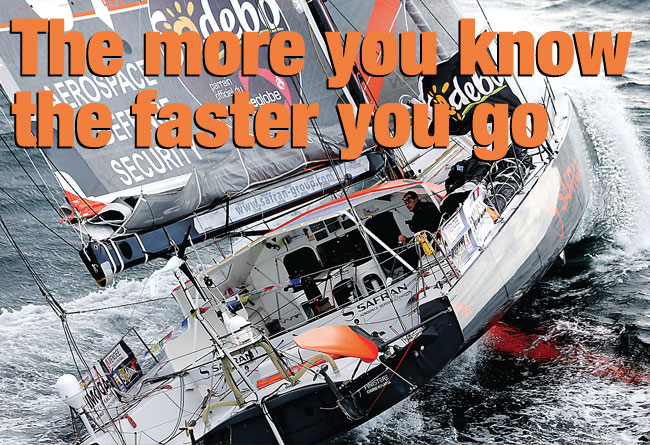
Jocelyn Blériot talks to one of France’s self-confessed masters of the dark arts… Pierre Bourcier
Groupama, Banque Populaire, Safran, Francis Joyon’s round-the-world record breaker IDEC, Team SEB in the Volvo race and Victory Challenge in the Cup… Pierre Bourcier has rolled out his electronic systems across a wide variety of famous racers and built himself a nice reputation based upon intellectual curiosity combined with an uncompromising approach towards reliab - ility. The man’s not a half-bad sailor either, and has clocked up plenty of big ocean miles and Orma 60 grand prix laps.
Last time we checked in Bourcier had just finished developing a clever little black box in collaboration with Cosworth, bringing racecar monitoring and analysis contraptions to a wet sailing cockpit. By 2012 the Cosworth-manufactured devices were in common use by Olympic sailing teams as well onboard some of the world’s fastest offshore yachts.
More recently Bourcier has moved on to less earthly considerations with a growing interest in aeronautics. Pretty obvious as he welcomes you into his stylish office in La Trinité, overlooking the famous Quay Loïc Caradec, home of hull-flying equilibrists and Vendée Globe hopefuls.
Half seaman, half pilot, the man who rigged Hydroptère up with more than 60 sensors plus numerous live video cameras for Alain Thébault’s last record attempt is now fired up about his latest project. ‘This is about getting a head start and staying at the front of the future of competitive sailing,’ he’d said to me over the phone… it was definitely time for another visit. Seahorse: First some background… why did you originally think that car racing technology was relevant to sailing?
Pierre Bourcier: Racing sails – and now wings – are comparable to high-performance car engines, complex powerhouses. But racecar engines are managed electronically, while sailing remains almost entirely empirical. Developing better tools, and then testing and optimising the apparatus involved in establishing more accurate information about power delivery and balance in sailing, is essential if we are to improve our understanding of performance. And whether in sailing or motorsport, the approach required is technically complex and also often must be carefully woven into a tight programme schedule.
We invite you to read on and find out for yourself why Seahorse is the most highly-rated source in the world for anyone who is serious about their racing.
To read on simply SIGN up NOW
Take advantage of our very best subscription offer or order a single copy of this issue of Seahorse.
Online at:
www.seahorse.co.uk/shop and use the code TECH20
Or for iPad simply download the Seahorse App at the iTunes store


